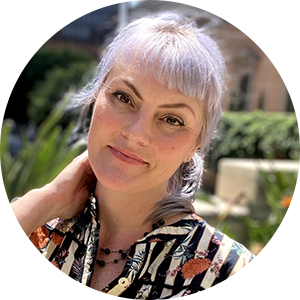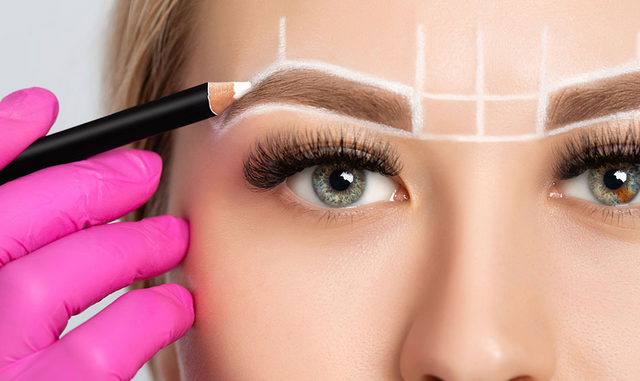Navigating Through the Tangles: Understanding and Addressing Hair Loss
Hair loss, a common concern among many, can significantly impact an individual's self-esteem and overall quality of life. Broadly classified into progressive and reactive, understanding the underlying causes and appropriate interventions is crucial for managing this condition effectively.
Types of Hair Loss Progressive Hair Loss & Reactive Hair Loss
Progressive Hair Loss
This type
Over time,
Progressive hair loss, such as male or female-pattern baldness, is marked by a gradual thinning of the hair, primarily attributed to hormonal imbalances. Such imbalances cause a disruption in the hair growth cycle, particularly shortening the anagen (growth) phase ("The Physiology of the Scalp: The Life Cycle of Hair"). This causes the hair to quickly progress to the other two phases, leading to what's described as "runaway." This accelerated cycle depletes the hair capital that's supposed to last a lifetime, potentially leading to irreversible baldness if not addressed properly.
Moreover, hair structure is affected as hair is primarily made of dead, keratinized cells and originates from hair follicles, which are deeply embedded in the skin. Progressive hair loss could potentially impact the health and functionality of these hair follicles, thereby affecting the overall hair structure and growth ("Hair - not just what is on your head - BASF Personal Care").
In essence, progressive hair loss disrupts the natural hair growth cycle by hastening the transition between growth phases and possibly compromising the structure and health of the hair follicles, leading to thinning hair and eventual baldness if not addressed.
We’ll give some suggestions for what to do about this below, but first, a bit about reactive hair loss.
Reactive Hair Loss
Unlike its progressive counterpart, reactive hair loss is sudden, usually triggered by specific events or stresses on the body. It is characterized by a swift transition from the growth phase directly to the shedding phase (telogen), resulting in temporary but massive hair shedding about three months post-trigger event. Reactive hair loss, however, does not typically lead to baldness and can be reversed by quickly reactivating the hair cycle ("The Physiology of the Scalp: The Life Cycle of Hair").
Addressing Hair Loss
Understanding the type of hair loss one is experiencing is pivotal to selecting an effective treatment strategy.
Consultation and Treatment
The first step in addressing hair loss should always be to consult with a dermatologist or specialist. Recognizing whether the hair loss is progressive or reactive aids in tailoring treatment approaches, which may range from topical treatments and supplements to significant lifestyle changes.
Understanding Hair Loss
Knowledge of the hair growth cycle and the phase affected by hair loss can guide interventions.
For instance, interventions for progressive hair loss may focus on prolonging the anagen (growth) phase.
Strategies such as hair anchoring, which aim to keep hair in the resting phase longer and foster new hair growth, are vital in managing hair loss.
while those for reactive hair loss might aim at swiftly reactivating the hair growth cycle.
### Additional Insights
Here are three
Grow new hair
Keep the hair in the resting phase longer
Nourish your hair

Moreover, there's growing interest in both natural remedies and medical treatments. The choice between these options often depends on personal preference, the nature of the hair loss, and professional advice.
The hair follicle, a sac embedded deep into the skin, plays a central role in hair anchoring and overall hair health. Ensuring the follicle's health through adequate nourishment and care can significantly impact both the prevention and management of hair loss ("Hair - not just what is on your head - BASF Personal Care").
### Conclusion
Hair loss, while a challenging condition, can be managed with the right knowledge and approach. Recognizing the type of hair loss, consulting with professionals, and exploring both natural and medical solutions are key steps in addressing this concern. Care for the hair follicle and strategies to promote hair anchoring further strengthen the approach to managing hair loss, creating a comprehensive and effective treatment plan.
Otio outline: The Physiology of the Scalp: The Life Cycle of Hair
Healthtech
Biology
Hair Growth
Personal Stories
Curated a minute ago
Smart notes generated with AI
Types of Hair Loss
Progressive Hair Loss: Characterized by gradual thinning, often due to hormonal imbalances, leading to a shortened anagen phase and accelerated hair cycle.
Reactive Hair Loss: Triggered by a specific event, causing a rapid shift from the anagen phase to the telogen phase, resulting in temporary, massive hair shedding.
Addressing Hair Loss
Understanding Hair Loss: Recognizing the type of hair loss and the phase of the hair growth cycle affected is crucial for effective treatment.
Consultation and Treatment: Consulting a dermatologist for tailored treatments, which may include topical treatments, supplements, or lifestyle changes.
Additional Insights
Hair Anchoring: Strategies to keep hair in the resting phase longer and promote new hair growth.
Natural and Medical Solutions: Interest in both natural remedies and medical treatments for managing hair loss.
PAST
Do you have Progressive or Reactive Hair Loss?
In the journey of self-care and beauty, understanding the science behind hair growth can be as fascinating as exploring a new art gallery. Just as each piece of art tells a story, so does every strand of hair on our heads. The hair follicle, a tiny but mighty organ embedded deep within our skin, serves as the canvas where the story of each hair strand begins (American Academy of Dermatology Association, n.d.).
Types of Hair Loss
Progressive Hair Loss: Characterized by gradual thinning, often due to hormonal imbalances, leading to a shortened anagen phase and accelerated hair cycle.
Reactive Hair Loss: Triggered by a specific event, causing a rapid shift from the anagen phase to the telogen phase, resulting in temporary, massive hair shedding.
Progressive Hair Loss
How does progressive hair loss affect the different stages of the hair growth cycle and the hair structure?
Progressive hair loss affects the hair growth cycle and hair structure by causing disturbances in the hair growth phases. Normally, hair growth occurs in three phases: anagen (growth phase), catagen (transitional phase), and telogen (resting phase). In progressive hair loss, such as male or female-pattern baldness, there's a hormonal imbalance that results in a disturbance of the hair cycle. This leads to a significant shortening of the anagen phase, causing the hair to quickly progress to the catagen phase and then to the telogen phase, leading to what's described as "runaway." This rapid succession of the hair's life cycles can deplete the hair capital, which is meant to last a lifetime, prematurely leading to irreversible baldness if left unchecked ("The Physiology of the Scalp: The Life Cycle of Hair").
Moreover, hair structure is affected as hair is primarily made of dead, keratinized cells and originates from hair follicles, which are deeply embedded in the skin. Progressive hair loss could potentially impact the health and functionality of these hair follicles, thereby affecting the overall hair structure and growth ("Hair - not just what is on your head - BASF Personal Care").
In essence, progressive hair loss disrupts the natural hair growth cycle by hastening the transition between growth phases and possibly compromising the structure and health of the hair follicles, leading to thinning hair and eventual baldness if not addressed.
Reactive Hair Loss
Reactive hair loss affects the different stages of the hair growth cycle by causing a rapid and sudden transition from the anagen phase (growth phase) to the catagen phase (transitional phase) and then to the telogen phase (resting phase). This sudden progression results in the hair entering a state of loss rather quickly. The transition to the telogen phase leads to hair falling out in a massive and impressive manner, typically around three months after the triggering event due to the duration of the telogen phase itself. This type of hair loss does not typically lead to baldness and is considered temporary; by reactivating a new hair cycle quickly, hair loss can be stopped, and new hair growth may begin ("The Physiology of the Scalp: The Life Cycle of Hair").
Regarding hair structure, hair is mainly composed of dead, keratinized cells and originates from hair follicles, which are embedded in the skin. Reactive hair loss mainly impacts the hair growth cycle rather than the hair structure itself. However, the sudden shedding and subsequent regrowth could theoretically influence the appearance and condition of new hair as it emerges from the affected follicles ("Hair - not just what is on your head - BASF Personal Care").
Hair Growth Cycles
Hair growth occurs in a dynamic cycle with three main phases: anagen (growth), catagen (transition), and telogen (resting). The anagen phase is a time of vibrant creation, where cells within the hair root divide rapidly, pushing the hair shaft upward – a true testament to the body's natural ability to create and renew (American Academy of Dermatology Association, n.d.). This phase mirrors the seasons of growth and flourishing in our lives, lasting several years and setting the stage for the length and strength of our hair.
Transitioning to the catagen phase, the follicle undergoes a period of change, reminiscent of an artist pausing to reflect before embarking on a new masterpiece. This short phase prepares the hair for its next journey, detaching from the nutrient-rich blood supply and setting the stage for renewal.
Finally, the telogen phase is a time of rest and reflection, lasting about three months. During this period, new hair begins its growth beneath the resting club hair, eventually pushing it out and starting the cycle anew (American Academy of Dermatology Association, n.d.). This phase reflects the importance of rest and rejuvenation in both our hair's lifecycle and our personal growth journeys.
Understanding these phases sheds light on the importance of nurturing our hair and scalp with products that align with our body's natural rhythms and cycles. Arbelola champions this holistic approach, advocating for beauty solutions that not only care for our hair but also sustain our planet. Through the artful blend of science and nature, we can cultivate a beauty routine that honors our body's natural processes, promoting healthy hair growth and embodying the principle of living beautifully from the inside out.
Embracing the cycles of hair growth teaches us the value of patience, care, and respect for our bodies. As we navigate the phases of our hair's journey, let us draw inspiration from the artful beauty of nature and the innovative spirit of science, cultivating a lifestyle that celebrates confidence, sustainability, and conscious living.
References:
American Academy of Dermatology Association. (n.d.). Hair loss: Who gets and causes. Retrieved from https://www.aad.org/public/diseases/hair-loss/causes/18-causes
https://www.renefurterer.com/en-ca/tips/scalp/the-physiology-of-the-scalp/the-life-cycle-of-hair
progressive hair loss, which takes place gradually
reactive hair loss, which is sudden and occurs in reaction to an event.
In the case of reactive hair loss, there is a rapid and sudden transition from the anagen phase to the catagen phase and then to the telogen phase. The hair is therefore suddenly in a state of loss.
Approximately three months after the imbalance or shocking event that causes this premature transition to the telogen phase, the hair falls out in a massive and impressive way. This three-month delay corresponds to the duration of the telogen phase itself: the time it takes for the hair to travel from the moment it detaches from the follicular papilla until it is pushed out of the scalp.
This type of hair loss is temporary and does not lead to baldness. By quickly reactivating a new hair cycle, hair loss can be effectively stopped and new hair growth can be started.
In the case of progressive hair loss, or male- or female-pattern baldness, it is a disturbance of the male hormones in the body that causes the cycles to go haywire.
This imbalance leads, in both men and women, to a disturbance of the hair cycle, which results in a consequent shortening of the anagen phase.
Because this growth phase is shorter, the hair moves too quickly into the catagen phase and then into the telogen phase. This is what’s known as "runaway." The life cycles of the hair follow one another at a frenetic pace.
The hair capital, normally programmed to last a lifetime, is prematurely depleted. This accelerated process, if left unchecked, leads to irreversible baldness.
This section in green is from the video by Cassandra in the Evernote: 3 Hair loss Mistakes You're Making Right Now - YouTube
Hair Anchoring
Keep the hair in the resting phase longer
Grow new hair
Nourish your hair
What anchors the hair into the skin?
The hair follicle is an embedded sac of the epidermis that goes deep into the skin and anchors the hair into the skin. It contains various components that are important for hair growth and health.
Hair - not just what is on your head - BASF Personal Care
https://courses.lumenlearning.com/wm-biology2/chapter/hair/
Hair is a keratinous filament growing out of the epidermis. It is primarily made of dead, keratinized cells. Strands of hair originate in an epidermal penetration of the dermis called the hair follicle. The hair shaft is the part of the hair not anchored to the follicle, and much of this is exposed at the skin’s surface. The rest of the hair, which is anchored in the follicle, lies below the surface of the skin and is referred to as the hair root.
Hair Growth
Hair grows and is eventually shed and replaced by new hair. This occurs in three phases.
The first is the anagen phase, during which cells divide rapidly at the root of the hair, pushing the hair shaft up and out. The length of this phase is measured in years, typically from 2 to 7 years.
Hair typically grows at the rate of 0.3 mm per day during the anagen phase. On average, 50 hairs are lost and replaced per day. Hair loss occurs if there is more hair shed than what is replaced and can happen due to hormonal or dietary changes. Hair loss can also result from the aging process, or the influence of hormones.
The catagen phase lasts only 2 to 3 weeks, and marks a transition from the hair follicle’s active growth.
Finally, during the telogen phase, the hair follicle is at rest and no new growth occurs. At the end of this phase, which lasts about 2 to 4 months, another anagen phase begins. The basal cells in the hair matrix then produce a new hair follicle, which pushes the old hair out as the growth cycle repeats itself.

How do hair follicles produce hair
For the answer to the following question, include citations in APA format. Also, ask any questions that will help me produce an answer that is more engaging for my audience: How do hair follicles produce hair?
Browser Pro
- Relevant Solutions: Are you looking for natural remedies, medical treatments, or a combination of both to be included in the explanation?
- Personal Stories: Would including testimonials or success stories from individuals who have successfully managed hair loss be of interest?
Assuming a general interest in understanding the biological process, with a focus on relatable explanations and interest in both natural and medical solutions, here is an explanation:
How Do Hair Follicles Produce Hair?
Hair follicles are remarkable structures that play a central role in hair production. The process is dynamic and influenced by various biological factors. Each hair follicle goes through three main phases: anagen (growth phase), catagen (transitional phase), and telogen (resting phase) (American Academy of Dermatology Association, n.d.).
- Anagen Phase: This is the growth phase, where hair follicles actively produce hair. Cells in the root of the hair are dividing rapidly, adding to the hair shaft and causing the hair to grow. This phase can last several years, and the length of this phase determines the maximum length of your hair.
- Catagen Phase: After the growth phase, the hair enters the catagen phase, which lasts about 10 days. During this transitional phase, the hair follicle shrinks, and the part of the hair that is not growing detaches from the blood supply, forming what is known as a club hair.
- Telogen Phase: Following the catagen phase, the hair follicle enters the telogen phase. This is a resting phase that lasts around three months. During this time, the club hair rests while a new hair begins to grow beneath it. Once the new hair is ready to emerge, it pushes the old hair out of the follicle, and the cycle begins again (American Academy of Dermatology Association, n.d.).
For women aged 30-50 experiencing hair loss, understanding these phases is crucial. Factors such as hormonal changes, nutritional deficiencies, stress, and certain medical conditions can disrupt this cycle, leading to hair thinning or loss. Treatments may target these phases to either prolong the growth phase or prevent premature entry into the resting phase.
Citations:
- American Academy of Dermatology Association. (n.d.). Hair loss: Who gets and causes. Retrieved from https://www.aad.org/public/diseases/hair-loss/causes/18-causes
To address hair loss effectively, it's essential to consult with a dermatologist who can recommend specific treatments based on the underlying cause. Options may include topical treatments like minoxidil, supplements to address nutritional deficiencies, or lifestyle modifications to reduce stress.
References
- No additional references available
Recommended questions: Enter the number to query directly
[ 1 ] What are the best treatments for hair loss in women?
[ 2 ] How can diet and lifestyle changes affect hair health?
[ 3 ] Are there effective natural remedies for hair loss?
Care for the hair follicle and strategies to promote hair anchoring further strengthen the approach to managing hair loss, creating a comprehensive and effective treatment plan.





